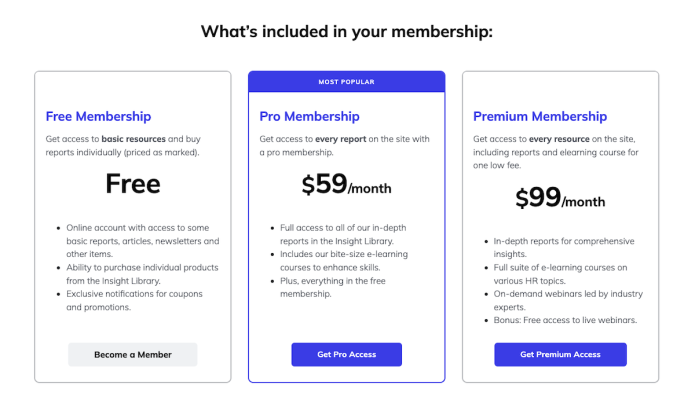Productivity hacks for membership website administrators

Managing your membership website, as you may know by now, is not something you dip into once in a while, but is a regular practice, and can be time-consuming. That's why it's important for membership site managers to take advantage of productivity tools and automations that can save time and money.
The most popular (and successful) strategies to attract new clients and keep them coming back are entered around producing content, for your website and social media engagement. the frequent addition of new content is so important for improving your search ranking, driving traffic to your website and for keeping subscribed members engaged and active.
But the task of regularly updating a membership website with fresh and relevant content can seem overwhelming at times, especially if: a) you’re doing everything yourself, and b) if you don’t have processes in place to make it all go as smoothly and quickly as possible.
To streamline workflows and maximize efficiency, here are 7 productivity hacks for membership website administrators that should help you boost your productivity so you can get more content out there in less time…and generate more paying, loyal clients for your business.
1. Task batching for productivity
Content creation is the lifeblood of your online membership business. You need content on an ongoing basis for your membership website, for your blogs, social media and newsletters. A good way to make these tasks easier to organize is to implement batching. For example, spend the day next Saturday creating 3 months of Facebook posts, then schedule them. You can create multiple pieces of membership content that way too - SubHub’s membership platform lets you schedule your content publication. Or you could rent a video studio for one day and polish off 12 videos for advertising or website content.
Another form of batching is to separate all the tasks involved in creating content - research, writing, editing, for example. Then do all the research for a dozen posts, then all the writing, then all the editing and posting. This allows you to stay completely focused and in one specific ‘brain mode’, creating flow. It requires a bit of planning ahead, but this kind of productivity means you have more time to focus on the money-making activities in your business.
2. Outsource or delegate non-core tasks
How can we increase productivity with outsourcing? Many entrepreneurs struggle with this one - when to outsource and when not? What to outsource and what not to?
If you can outsource the right tasks at the right time, obviously it’s going to save you time. Sources like Upwork.com and Fiverr.com are good places to find reasonably priced expertise on just about anything an online business owner might need, from graphics to software development.
Many small business owners outsource some of the more technical aspects of running their business, such as video editing, and creating Facebook or YouTube ads. You will still be at the helm of the content creation, but the strictly technical aspects of video editing, using the Facebook ad manager, and optimizing YouTube posts don't really need to have your personal input.
If you don’t have experience with these tasks, even if you want to do them yourself, they can easily end up being too time-consuming as you climb the learning curve. Outsourcing can be the answer. You might be amazed at how quickly and efficiently an expert can create something that would take you hours or weeks or even months.
3. Repurposing content to save time
When it comes to content, in a perfect world, we would all be able to come up with original, scintillating prose, graphics and video content on a daily or weekly basis. But the reality is, creating a video on Topic A, then creating a blog post on the same topic, and then a Facebook post, etc. etc., takes a lot of energy and creativity. The answer is repurposing content to increase productivity.
Let’s say you’ve created a video. The transcript of it could be used to optimize your YouTube channel. Then take the transcript and edit it to offer a synopsis for your Facebook post. Your blog post can contain a couple of lines of introduction with a link to the video.
For your newsletter, you can pull out one or two points from the transcript that would appeal to your list, and then point to the blog post. Once you get the process down, creating and posting content can be fast and easy. It could even be outsourced.
4. Content management tools
Have you ever attached a large file or files to an email, only to have it bounce back? At that point, you have to figure out how to make the files smaller, and if they are images, that can be tough without compromising their quality. Your best bet is to use a simple tool like DropBox or Google Drive to drop files into. Both of these tools let you easily share the link to the material.
Many third-party tools can be easily embedded into your membership website, no matter what platform it’s on. These tools can be used to efficiently mange certain tasks, directly from your website. Tools like Vimeo and Wistia allow videos to be embedded directly on your membership site, so you don’t have to upload and optimize each video. You can also embed features like photo galleries, calendars, audio files, forms and quizzes into your site, so you can easily promote use of your website to members, without having to share external links.
5. Project management tools
Project management tools can help administrators stay organized and keep track of tasks, deadlines, and team collaboration. Platforms like Asana, Trello, or Monday.com allow administrators to create and assign tasks, set priorities, track progress, and communicate with team members in real-time.
Another very handy type of project management tool is a a content calendar and editorial scheduling tool. This provides a roadmap for content creation and publication, helping administrators stay organized and consistent with their content strategy. Use a spreadsheet, Google Calendar, or specialized content management tools to plan and schedule blog posts, videos, webinars, and other content types in advance. Include details such as topic, format, publication date, and responsible team member to ensure accountability and timely delivery of content. Popular tools for scheduling social media posts are Buffer or Hootsuite.
Having trouble keeping your appointments straight? There are plenty of appointment setting tools out there to help, which will not only set the appointment, but send out reminder emails, texts, cancellation notices, and will even integrate with your favorite online call tool such as Zoom, Teams, or Streamyard.
6. Automate routine tasks
Adding automation to your business can save administrators valuable time and effort. Utilize tools and platforms to automate processes such as member registration, email marketing, content scheduling, and payment reminders. For example, set up automated email sequences to welcome new members, send out newsletters, or re-engage inactive subscribers.
SubHub’s platform allows an integration with MailChimp so you can market separately to different member groups. But if you are collecting email addresses and adding them to a list, be sure to set up an automation to welcome the new member and provide some valuable information going forward. Many of the tasks you will need to be automated are included in the SubHub platform as well, such as payment processing, recurring subscription renewals, cancellations and more.
A word of caution, though: You don’t want to get too complex with your automations before you’re ready. Spending hundreds of dollars per month on software you don’t need yet is only going to be a waste of money. Start with simple automations that are available in all-in-one platforms like SubHub, and grow into more complicated automations.
7. Templates for content & communication
Ever heard the saying “Don’t reinvent the wheel?” It’s good advice. There are thousands of templates available on the web: Email templates, sales letter templates, social media post templates, infographic templates, proposal templates, invoice templates and much more. Standardized templates for various types of content and communication can help immensely to streamline the creation process.
This could include templates for blog posts, email newsletters, social media posts, member welcome messages, and event announcements. You can create a template for a podcast or video, too. Not only do templates save time by providing a framework to work from, but they also ensure consistency in branding and messaging across different channels.
As you can see, creating a thriving membership-driven business has a lot of components to it, but there are also plenty of ways to make the job faster, easier, more profitable, and more fun.
If you’d like to get started on your profit-making membership website, start with free SubHub platform trial here: https://subhub.com/trial




